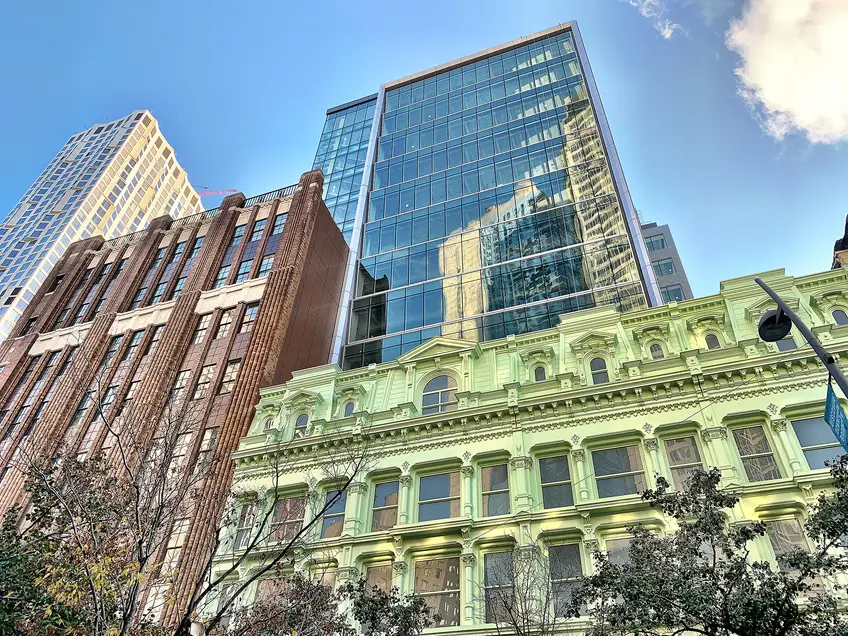 Construction of 'The Wheeler' is nearly finished as of November 2019 (CityRealty)
Construction of 'The Wheeler' is nearly finished as of November 2019 (CityRealty)
One of New York City’s most encouraging trends is the diversification of the city’s office core beyond Midtown and lower Manhattan. Downtown Brooklyn’s Fulton Street — the city’s most successful pedestrian and transit mall — is gearing up to welcome a 620,000-square-foot creative office campus named The Wheeler. Spearheaded by the commercial heavyweights of Tishman Speyer Properties in partnership with Macy's and China-based HNA Group, the complex project involves the marriage of two turn-of-the-century buildings with a modern 10-story intervention to rise inside and above. In the coming month, the threading will be complete, yielding modern Class-A office space ideal for company's employing the city's growing creative class.
Through a $270 million deal with Macy’s in 2015, Tishman Speyer acquired the top five floors of the department store’s historic building at 422 Fulton Street, allowing the distressed location to consolidate its sales floors to the lower four levels of the building. In addition to the office rehab and addition, Tishman is in the final stretch of bringing a 51-story, 476-unit condo tower at 11 Hoyt to market. Its site once held a sprawling parking garage for the Macy’s store but is now selling studio to four-bedroom residences from $705K to $4.4 million.
In this article:
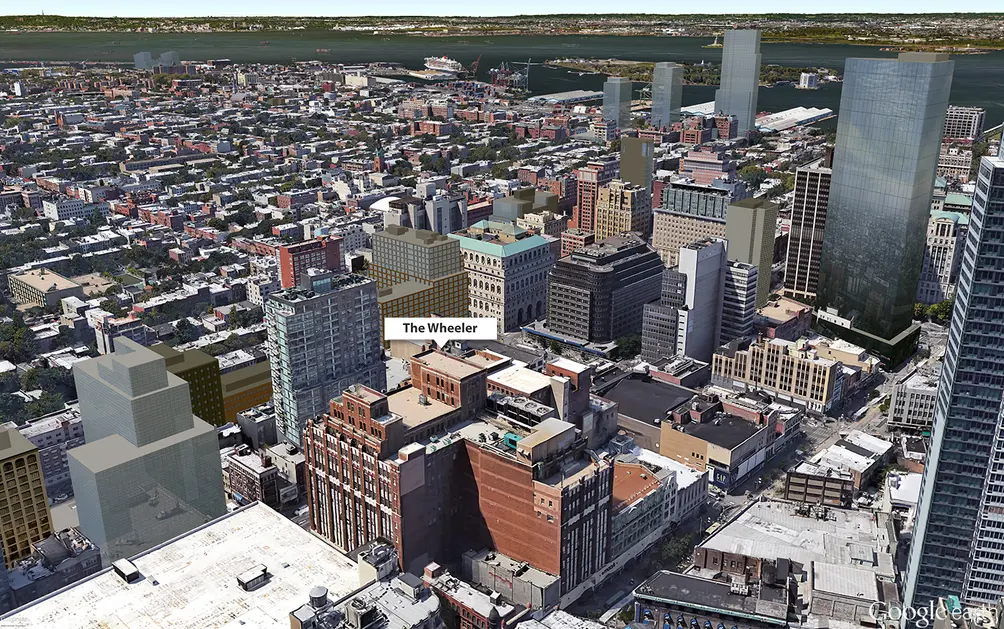 Aerial showing Macy's pre-existing buildings which will be knit together to create The Wheeler
Aerial showing Macy's pre-existing buildings which will be knit together to create The Wheeler
While Tishman Speyer has nearly 22 million square feet of office space across the city, The Wheeler will be its first project in Brooklyn. The Rob Speyer-led firm has made waves outside of Manhattan, however. In Long Island City, they are building a pair of office towers called the JACX and next door, they recently opened the first phase of a 1,800-unit rental complex called Jackson Park.
The Wheeler is named after Andrew Wheeler, the original developer of the green-toned cast-iron building at 422 Fulton Street. The developers tapped California-based Shimoda Design Group and local megafirm Perkins Eastman as the designers. As is common with modern interventions, the architects decided to provide a stark contrast between the old and new. The new addition will be setback from the existing buildings, wrapped in a glass façade, and have a glass-enclosed stair tower along its east side.
The two pre-existing structures, a cast-iron Second Empire-style building built in the 1870s by Andrew Wheeler and a sprawling yet delectable Art Deco building finished in 1930, have been meticulously restored. According to a November 2019 story from The New York Times detailing the project's complex restoration efforts, the developers commissioned Allen Architectural Metals, an Alabama-based firm to restore the cast-iron commercial palace. Kate Allen, the restoration company’s executive vice president told the Times, “As a preservationist, I felt that to lose this building would be a huge loss of cast-iron architecture for Brooklyn.”
The two pre-existing structures, a cast-iron Second Empire-style building built in the 1870s by Andrew Wheeler and a sprawling yet delectable Art Deco building finished in 1930, have been meticulously restored. According to a November 2019 story from The New York Times detailing the project's complex restoration efforts, the developers commissioned Allen Architectural Metals, an Alabama-based firm to restore the cast-iron commercial palace. Kate Allen, the restoration company’s executive vice president told the Times, “As a preservationist, I felt that to lose this building would be a huge loss of cast-iron architecture for Brooklyn.”
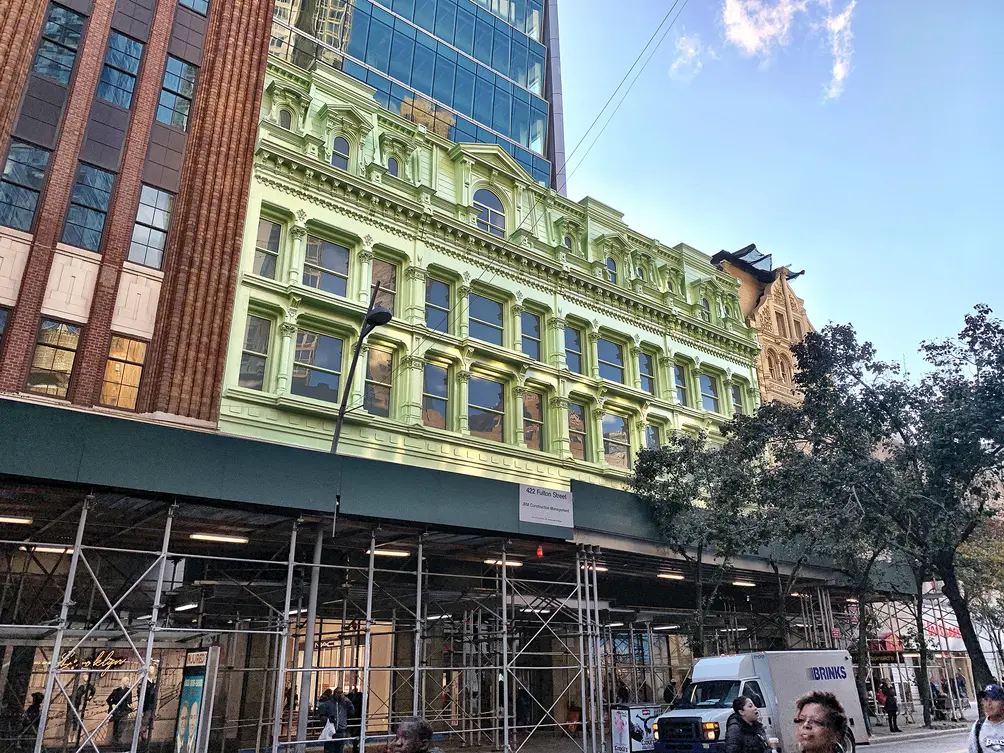 The restored cast-iron facade of 422 Fulton Street, a commercial palace finished in 1873
The restored cast-iron facade of 422 Fulton Street, a commercial palace finished in 1873
 A marriage of many architectural styles
A marriage of many architectural styles
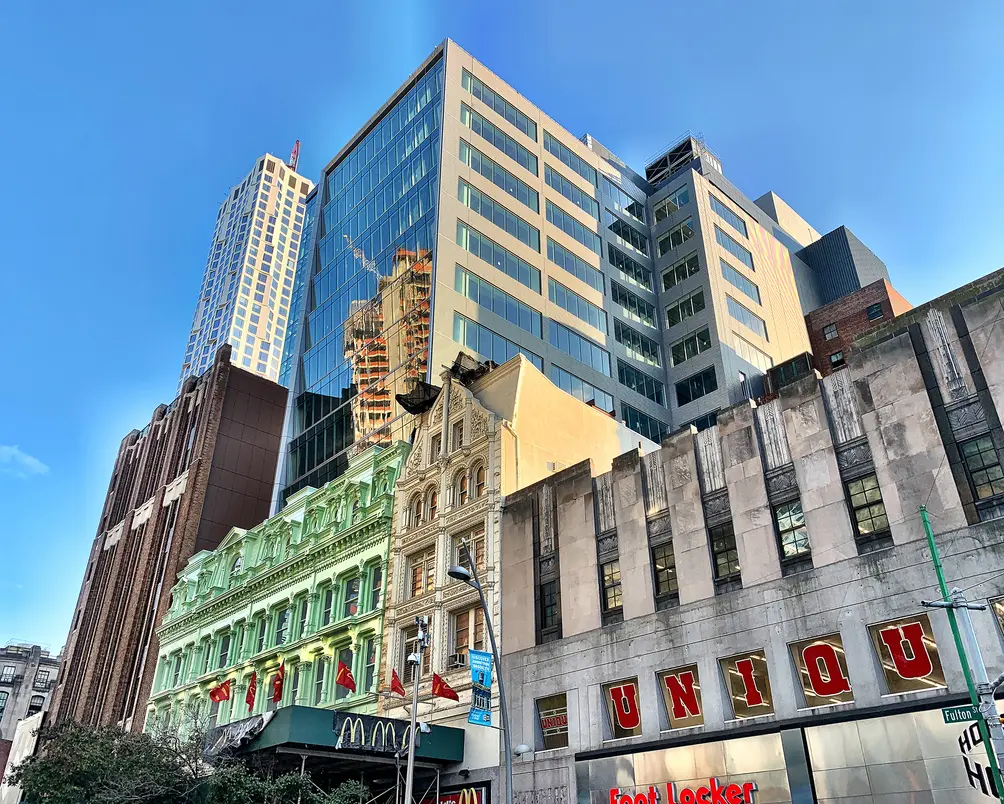 (CityRealty)
(CityRealty)
The Wheeler offers the largest commercial floorplates in Brooklyn. The first four floors have 90,000-square-foot floor plates with exposures on all sides. Floorplates on the six floors above will range in size from 34,000 square feet to 60,000 square feet. Each floor will have loft-like 16-foot high ceilings and a total of one acre of outdoor space provided by 11 gardened terraces and roof decks. With a roof height of 276 feet, high-floor occupants will enjoy views of the Manhattan skyline, harbor and the Statue of Liberty.
The Wheeler is a speculative office project that was begun with no pre-signed tenants. The odds have been in Tishman’s favor, however, since Downtown Brooklyn has a relative dearth of Class A office space and has a vacancy rate under 5% — the lowest among the city’s business districts.
Last month, The Daily News reported that Whittle School and Studios has signed a deal to lease the entire development. Founded by Chris Whittle, the private school will be the for-profit's third campus in the city and feature a gym, theater, boarding rooms, and space for advanced sports and robotics. The Wheeler is serviced by twelve subway lines and is a short commute from Manhattan and other neighborhoods of Brooklyn. The recent Times story notes the project will soon receive its temporary certificate of occupancy, and its main entrance will be at 181 Livingston.
Last month, The Daily News reported that Whittle School and Studios has signed a deal to lease the entire development. Founded by Chris Whittle, the private school will be the for-profit's third campus in the city and feature a gym, theater, boarding rooms, and space for advanced sports and robotics. The Wheeler is serviced by twelve subway lines and is a short commute from Manhattan and other neighborhoods of Brooklyn. The recent Times story notes the project will soon receive its temporary certificate of occupancy, and its main entrance will be at 181 Livingston.
 (Tishman Speyer)
(Tishman Speyer)
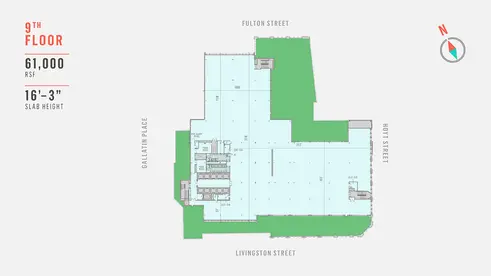 (Tishman Speyer)
(Tishman Speyer)
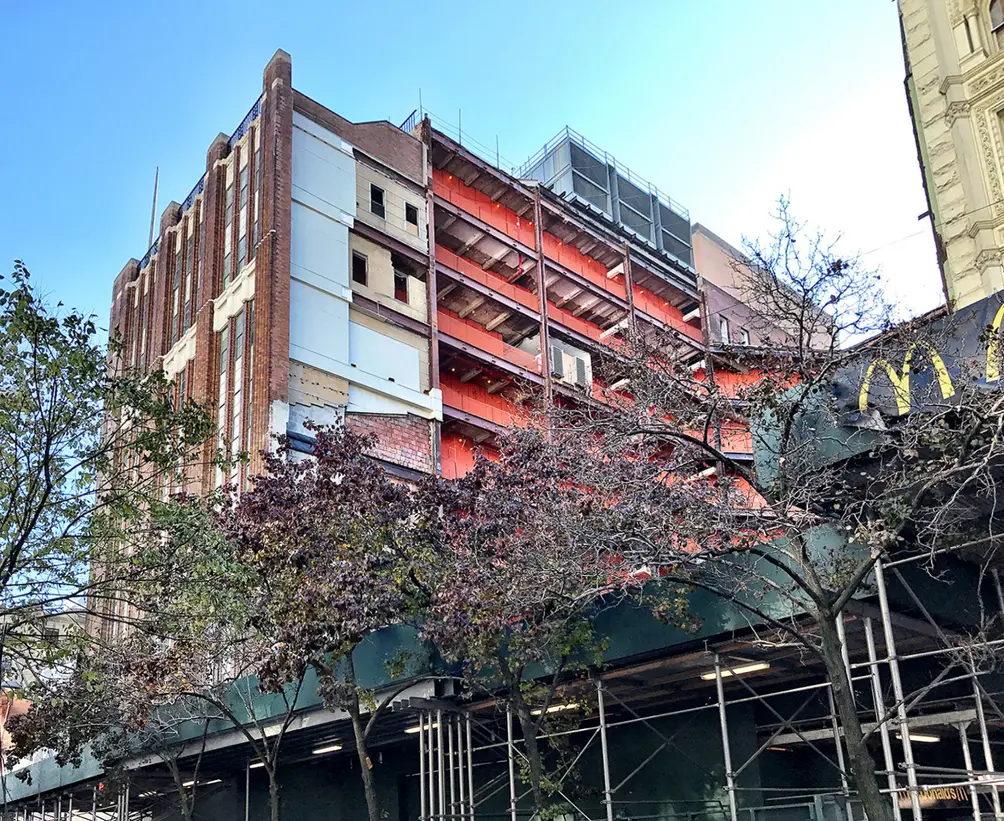 The project site in November 2017 (CityRealty)
The project site in November 2017 (CityRealty)
Would you like to tour any of these properties?


 6sqft delivers the latest on real estate, architecture, and design, straight from New York City.
6sqft delivers the latest on real estate, architecture, and design, straight from New York City.
